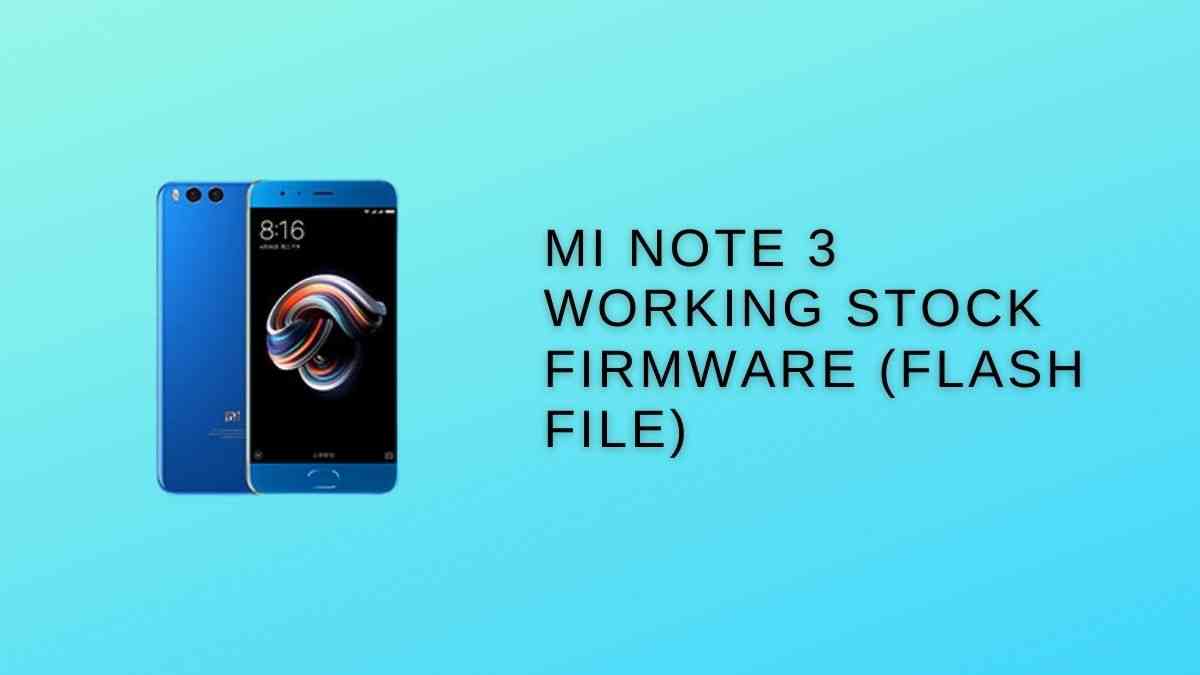Hey Xiaomi User!
Glad to see you here. In this article, we’ll talk about the mi note 3 flash file process.
Yes, You can reflash your stock firmware in your Mi note 3 android device.
Many people are already bored with twrp recovery or CWM recoveries. No matter which recovery you installed on your Xiaomi Note 3 device.
Coming to the point. We’ll guide how you can flash mi note 3 file to get your stock firmware back.
This process will be easy for you if you already know the Xiaomi device Flashing Process.
Here’s the mi note 5 pro flash file process; make sure you check out to start knowledge.
Page Navigation
Disclaimer
Flashing Mi note 3 firmware can harm your mi device. Below we mention some flash file links. So you don’t need to go to another site to get a working flash file for mi note.
PS – Read all steps carefully for successfully getting Flash file on mi note 3. Although it comes under risk, do at your won risk. twrp update will not be liable for any loss.
We understand you really want to get back your Mi note 3 stock firmware. But before implementing the process, make sure you know some facts about stock Firmware.
What Is Stock Firmware?
Stock ROM is the storage that comes by default with Android OS. And that android OS is also customized by your device manufacturer to give you more features. Stock ROM has limited functionalities. It is also called “Stock Firmware.”
Need Of Stock Firmware On Mi Note 3 Device
You’re going to flash stock firmware on your mi note 3 devices. That’s means you already know the custom ROM features. Most probably, you already take advantage of custom ROM or any popular custom ROM, Right!
Many people want to get back stock firmware because they know the custom ROM already void the device warranty.
To getting their device warranty back, they need to flash their stock firmware.
We’ll discuss more in the pros and cons section of this article.
Download MI Note 3 Flash Files
We do not upload these files. Download and flash at your own risk.
- jason_global_images_V11.0.3.0.PCHMIXM_20191024.0000.00_9.0_global
- jason_global_images_V9.6.2.0.NCHMIFD_20180608.0000.00_7.1_global
Popular links of mi note 3 flash files
Pros & Cons Of Flash File On Mi Note 3
After flashing stock firmware, you’ll get back the old device customization your manufacturer gives you after buying.
The device will look new.
Pros Of Flashing Stock Firmware
Your Mi note 3 devices will again secure. Now every app before installing will verify by google play protect. So you don’t need any further security.
Once again, you’ll have the authority to use any banking application, which was non-usable after installing Custom ROM.
We all were aware that once you install custom ROM, you can customize your device according to your needs. Sounds Good!
Cons Of Flashing Stock Firmware
You’ll not be able to install any third-party application. Now you can’t do lots of customization, which you did by custom ROM.
Guide To Flash File On Mi Note 3
You need to follow all steps carefully.
Vital Steps
Download Mi Flash Tool and flash file for Mi note 3. Make sure you have a USB cable to connect Mi note 3 with Pc.
Steps To Flash file On Mi Note 3
- First, download the latest flash file for the Mi Note 3 device.
- Now connect your device in fastboot mode.
- Next, Run Minimal ADB & Fastboot tool easily.
- Enter command
fastboot devicesin the Minimal ADB & Fastboot tool. - Next, enter
fastboot OEM edlcommand. - Now under the device manager port of Qualcomm HS USB QLoader 9008 port will show on your screen.
- Next, Run the Mi flash tool.
- Drag the downloaded flash file on the desktop.
- Select the folder path and click on refresh.
- Finally, tap a flash button.
You’re done! You successfully flash the file on Mi Note 3 device.
Final Thoughts
Flashing file will wipe all custom data which you saved in customized ROM. This process of flashing files is not easy if you’re not following any guide.
Make sure you read the complete article to get success. Don’t try to skip any steps. Every step depends on each other.
I hope you enjoyed it.

